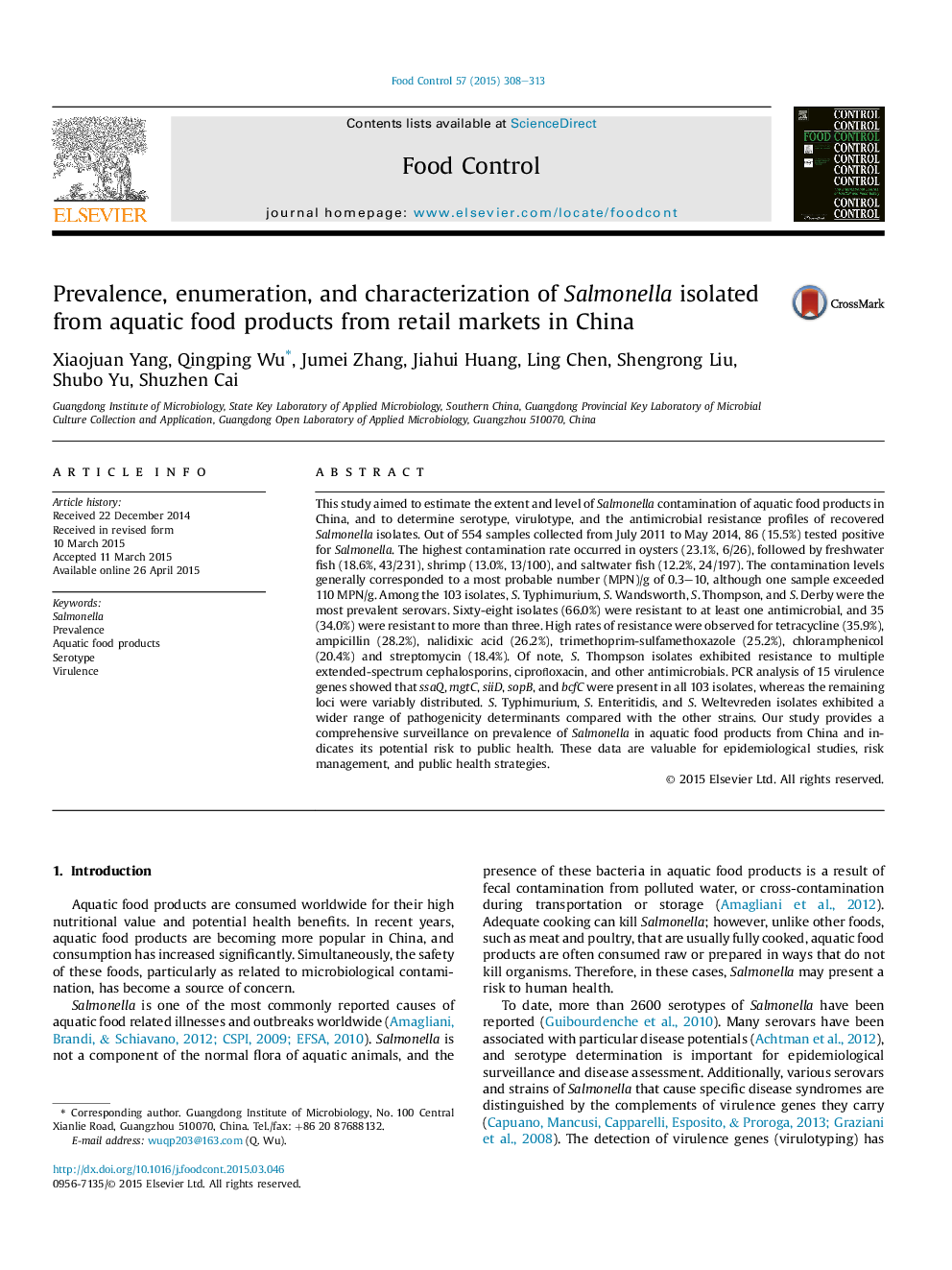| Article ID | Journal | Published Year | Pages | File Type |
|---|---|---|---|---|
| 6390735 | Food Control | 2015 | 6 Pages |
â¢High prevalence of Salmonella contamination in retail aquatic foods was determined.â¢Typhimurium, Wandsworth, Derby, and Thompson were the most common serovars.â¢Salmonella isolates showed a high prevalence of antibiotic resistance.â¢S. Thompson isolates exhibited multidrug resistance.â¢Salmonella isolates expressed a wide range of pathogenicity determinants.
This study aimed to estimate the extent and level of Salmonella contamination of aquatic food products in China, and to determine serotype, virulotype, and the antimicrobial resistance profiles of recovered Salmonella isolates. Out of 554 samples collected from July 2011 to May 2014, 86 (15.5%) tested positive for Salmonella. The highest contamination rate occurred in oysters (23.1%, 6/26), followed by freshwater fish (18.6%, 43/231), shrimp (13.0%, 13/100), and saltwater fish (12.2%, 24/197). The contamination levels generally corresponded to a most probable number (MPN)/g of 0.3-10, although one sample exceeded 110 MPN/g. Among the 103 isolates, S. Typhimurium, S. Wandsworth, S. Thompson, and S. Derby were the most prevalent serovars. Sixty-eight isolates (66.0%) were resistant to at least one antimicrobial, and 35 (34.0%) were resistant to more than three. High rates of resistance were observed for tetracycline (35.9%), ampicillin (28.2%), nalidixic acid (26.2%), trimethoprim-sulfamethoxazole (25.2%), chloramphenicol (20.4%) and streptomycin (18.4%). Of note, S. Thompson isolates exhibited resistance to multiple extended-spectrum cephalosporins, ciproï¬oxacin, and other antimicrobials. PCR analysis of 15 virulence genes showed that ssaQ, mgtC, siiD, sopB, and bcfC were present in all 103 isolates, whereas the remaining loci were variably distributed. S. Typhimurium, S. Enteritidis, and S. Weltevreden isolates exhibited a wider range of pathogenicity determinants compared with the other strains. Our study provides a comprehensive surveillance on prevalence of Salmonella in aquatic food products from China and indicates its potential risk to public health. These data are valuable for epidemiological studies, risk management, and public health strategies.
